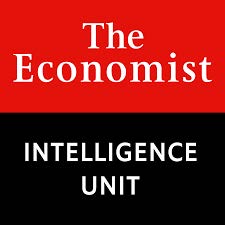CAPS Conference: The Economist Projects What’s in Store for the Global Economy
I had the opportunity to sit in on a very thorough presentation by a member of the Economist Intelligence Unit at the Center for Advanced Purchasing Studies meeting today. This was followed by a compelling Q&A session with a number of CSCO’s and some important insights.
Andrew Viteritti, Lead for the Commerce and Regulation division of the Economist Intelligence Unit Global Forecasting group began his presentation by reviewing the current and future state of the global economy. He began by noting that the prices of commodities are jumping around, owing to the on-going concerns around suppliers and destruction of infrastructure. One of the biggest contributors to inflation is the increase of oil and gas prices, which will remain high as long as the conflict in the Ukraine rages. Likewise, the prices for base metals and grains will also remain high. Some of the supply constraints are also due to the destruction of key infrastructure in the Ukraine for shipping of these commodities. So long as the conflict in the Ukraine continues, the EUI expects that prices will remain elevated. The conflict in the Ukraine is expected to continue throughout 2022, and will likely be a contracted conflict that will continue for perhaps five years or more. Thus, expect to see sanctions against Russia continuing for at least five years or more.
The Curse of Inflation
As a result of the spike in commodities, inflation will continue to occur. Global inflation rates are currently at 9.5%, fueled by high commodity prices. Supply chain disruptions have been part of this figure, as disruptions to air, sea and ground links through Russia have continued to impact supply. As a result of inflation, many central banks have hiked rates more aggressively. Andrew warns that these rate hikes will take time to bear fruit.
Most of the slow down in global economies will be felt in Ukraine and Russia (the world’s 11th largest economy). The EU economies will also be hit, especially Germany and Eastern Europe as we go into winter in 2022. The forecast is that the EU GDP growth will be reduced by 1.3 percentage points, shrinking to 2.7% growth, and only 3.1% in 2023.

Recession? Not likely
Despite higher inflation, the EIU predicts that recession is highly unlikely in 2022, due to the fact that many economies (including the US, Asia, and the Middle East) are experiencing solid growth and are in rebound mode. Some economies will have a “technical” recession in late 2022 and early 2023, which is negative GDP growth, but these are not true recessionary trends.
For 2022, the prediction is now a global growth of 2.6%, down from a predicted value of 3.9%. Clearly, the benign environment of 2018 is gone, and geopolitics are playing a central role in the global economy.
Risks are Increasing
The greatest risks looming ahead are concentrated in 2023. Next year will see some positive growth but only 1.7%, reflecting slowing growth in the US in China and recession in Europe. Global monetary tightening will take some time to kick in – likely in the second half of 2023. The US will likely see only 0.5% growth in 2023, the EU 0.4%, which in turn will impact other regions of the world. China will likely see a modest rebound after the 2022 slump, moving to only 5% growth. However, there are always risks that will move the needle, including the escalation of the Ukraine war, more COVID-19 variants, spikes in energy prices, and sovereign debt pile-ups.
Andrew also shared his Top Ten Risks for the Global Economy
- Deteriorating ties between China and EU/US force full decoupling
- Monetary tightening leads to global recession
- New, highly aggressive variant of COVID-19 emerges
- Cold winter worsens Europe’s energy crisis
- High inflation fuels social unrest
- War in Ukraine turns into global conflict
- China’s zero COVID policy leads to severe recession
- Cyberware erupts and shuts down supply chains
- Conflict erupts between China and Taiwan (Andrew said this is not likely, and I agree – see my previous blog)
- Extreme weather and war in the Ukraine prompts famine.
When will things return to normal?
Don’t hold your breath – unfortunately, the economy returning to normal could take awhile. (This is also a prediction I’ve made in an earlier post). On-going supply chain disruptions will provoke a deceleration of growth in the economy through 2022 – 2023. The good news is that ocean freight rates will start trending down somewhat. But don’t get too excited about this. The strained port infrastructure in the US and Europe as well as the locked in higher rate contracts put in place will keep rates elevated, and they will likely never return to where they were in 2018. The semiconductor crunch will push into 2023, but will ease more steadily this year, reflecting shifts in household consumption, and concerns about inflation, monetary tightening and recession.
In the meantime, resilience measures are increasing. Some of the biggest measures being put into place include the following:
- Build up of precautionary inventories (One executive I spoke with mentioned how they have so much inventory built up, that there are no warehouses available – so they are incurring millions of dollars in demurrage costs every quarter for containers with nowhere to go!)
- Dual sourcing and longer term contracts – This is always a challenge.
- Vertical integration – Home Depot and Lowes are buying their own container ships for example!
- Digitization of supply chain management – investing in risk management platforms like Resilinc is becoming an important element of risk management.
- Increase diversification China +1 or more, both near and afar. This is also exceedingly difficult to do – although growth in SE Asia is up significantly as people shift from China to these countries.
Reshoring – A Bridge Too Far?
In general, Andrew pointed out that although some reshoring is happening, especially in rich Western countries where the government’s ambition is to est targablisheted industrial policies and subsidies that promote domestic manufacturing. (For example, the CHIPS Act passed recently). However, as I’ve pointed out in my blogs, there are limitations to these strategies. In general, the EIU does not expect a mass return of production to rich Western countries or a mass corporate exodus from China.
Why not?
Well, moving supply chains is tricky, costly and risky. One executive I spoke with mentioned that his CEO was big on building in America, but the reality is that it is impossible to reshore product at the same costs. Even with the transportation savings – Mexico is difficult, because many of the raw materials are still coming from China. Instead, many companies will prioritize less risky tactics first (like “let’s wait and see!”). Production in Western countries is still very very expensive. And let’s not forget that China in and of itself remains a very important market. It is one of the largest consumer markets in the world, and has established and important production networks, strong logistics, and strong manufacturing execution. Finding these qualities anywhere else is not easy.
So you can expect some diversification, but supply chains will remain global. Asia will remain a production hub for some time, but expect SE Asia to benefit.
I really enjoyed Andrew’s presentation, and I agreed with almost all of his predictions. Thanks to CAPS as well for inviting the Economist to present to supply managers!
- Categories:


